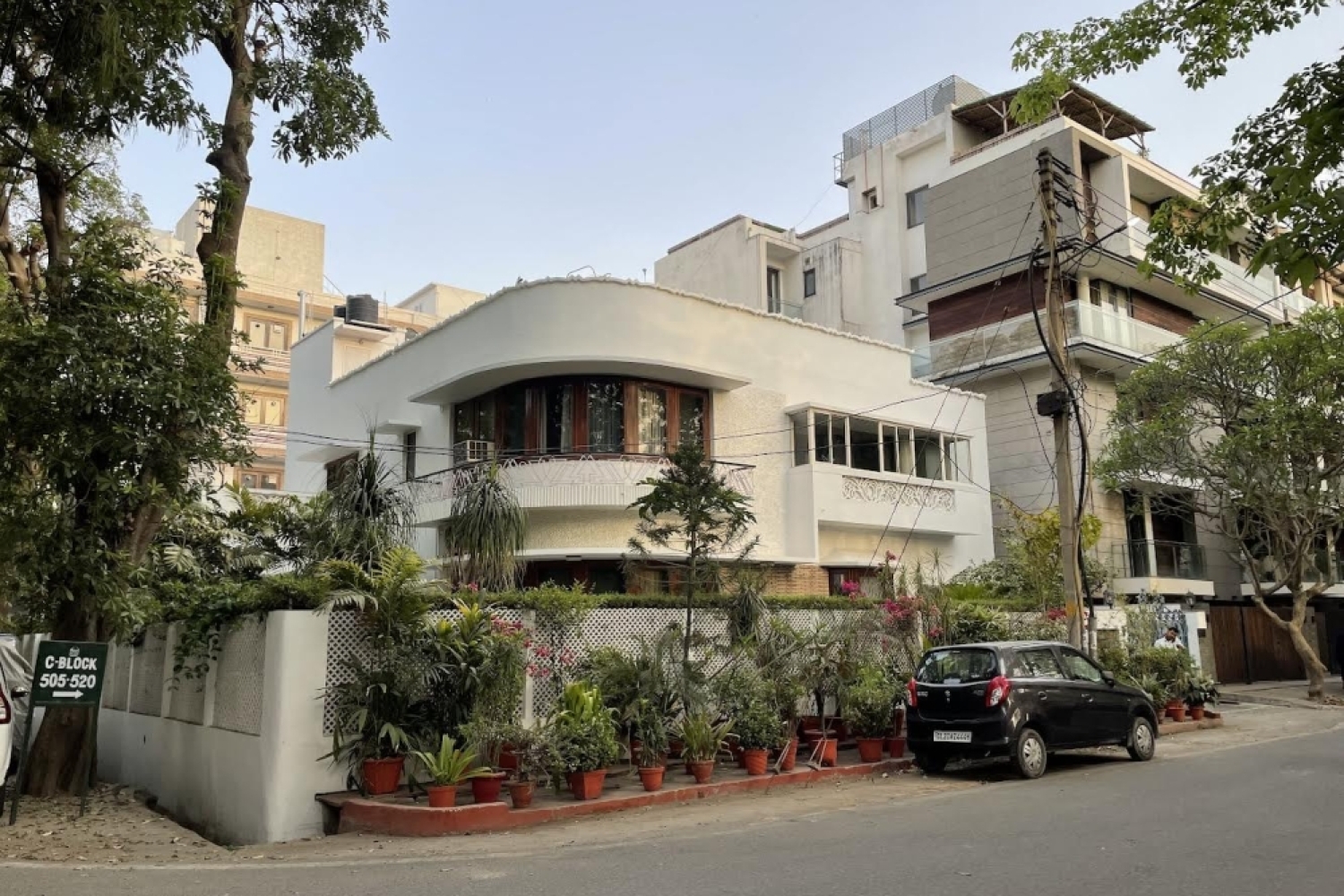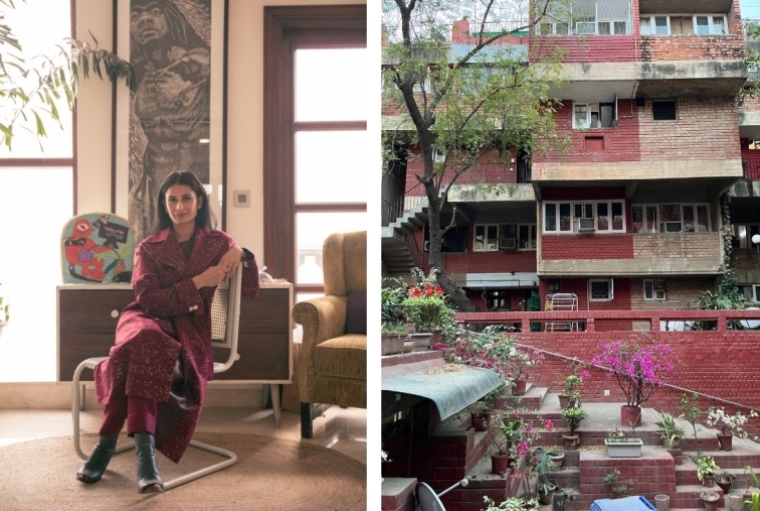

Delhi Houses is an intricate tableau of stories told by the residential spaces built over geographies and generations. This page chronicles the hidden narratives of intimate and personal spaces, as opposed to the in-vogue spots open to the public eye. With photographs and in-depth descriptions of what each of these humble abodes offers, Delhi Houses provides followers with a magnified lens into the everyday life of those who inhabit these homes. Founder Anica Mann, Delhi-based archaeologist, writer, and archiver, explores the country’s capital in search of these houses that inspire stories. She documents them on Delhi Houses to create an archive of historically iconic, aesthetically pleasing, and architecturally unique houses. “My role in Delhi Houses is of a conduit—I’m just a storyteller. The stories are all there; I’m simply reacquainting the readers with what they already knew,” she says.
Delving deeper into the art of archives, archaeology, and architecture, we are in conversation with her to learn more about her passion project.
What got you interested in archaeology?
I have always been fascinated by exploration. My dad was in the army, and all our holidays were always road trips. I am a boarding school kid, and whenever we were let out, I always wanted to explore. That is where it started. Watching movies like Indiana Jones, Lara Croft, and The Mummy inspired me more than anything. Thereon, while studying at Lady Sriram College, I read numerous books on Delhi, which urged me to begin my explorations within Delhi. I remember going into Chandni Chowk, having the book in my hand, and trying to look for the things the book was talking about, and I think it all started from there.
How did you start documenting houses all over the city?
I grew up in Delhi, and all my life, I have always felt that this city has a story to tell. We have all heard about Chandigarh as a story of modernism, but Delhi, the country’s capital city, has a specific language. The way the houses are made, the way space is treated, the way the people are, and the way they behave is all so distinct. Cut to 2012, the government’s new regulation was released, stating that all houses are to be built on stilts. That is when the switch of Delhi from a house city to an apartment city suddenly came, which made me feel a sense of urgency to catch a glimpse of these houses before they were no longer there. I wanted to know everything there was to know about these unanimous houses, reaching far into the crevices of Delhi’s heart.
What does the process of telling the story of each house look like?
I have about 30 years of memories of this city. I go into those 30 years and try to imagine each house. I ask myself several questions: What is the memory that I'm capturing? What is that one little thing that, perhaps, we won't see again once this house is gone? I try to imagine how I would feel if I lived in that house. Once I find my hook, I go deeper into what about that house that represents Delhi, which speaks about the city and its people. For instance, if I want to write about Godrej cupboards as a memory archive, I would try and describe what they are used for and what kind of tension they create in that house so that everyone feels their presence. That is how people get a sense of how any house feels even if they are not inside it.
Delhi is an architecturally diverse city. Are there any specific historical periods or architectural styles in Delhi that particularly fascinate you?
It’s difficult to choose, but the Kamla Nagar art deco houses, the big family bungalows of Rajinder Nagar, of Kamla Nagar, and some parts of Karol Bagh — I think those are fantastic because not only were they built specifically to house a big fat Indian family (some of these houses had about a hundred rooms!), but they were also custom-built by architects, according to each family’s preferences. The design elements of the terrazzo flooring, verandas and grills — these houses are so beautifully and exclusively devised that they always catch one’s eye.

What role does architecture play in reflecting the cultural identity of Delhi?
Architecture is paramount to the cultural identity of any city, especially Delhi. A city is made of multiple forms of architecture. There is public architecture, private architecture, and there is public-private architecture. Private architecture — essentially houses — takes over the largest portion of the urban landscape. It creates the main constituents of the city — what the city looks like, what it feels like, and how its people behave. I think it is the most essential building block of the identity of a city.
For a city as grand as Delhi, its architecture builds into the character of the people. And the character of the city is largely defined by public architecture because that is commissioned by the money of the people. However, the individual's choice in making their own house and fitting it into the larger city is a beautiful representation of what people choose to do to represent their city.
According to you, how does archaeology connect to architecture?
Archaeology and architecture are deeply interconnected. Primarily, archaeology is the study of human waste. This also comprises abandoned architecture or continually used architecture. The houses we honour on Delhi Houses form part of the architecture of a time that is now becoming redundant for a large number of people. Another aspect of Delhi Houses is celebrating those people who have held on to homes that represent the identity of Delhi and maintained them instead of pulling them down, rebuilding, and going through the real estate boom of monetizing their houses. What they are doing is preserving history. And the preservation of history is what archaeology is based on. While architecture inhabits human tendencies, archaeology is a historical reference to human tendencies.
Words Muskan Kaur
Date 23.01.2024